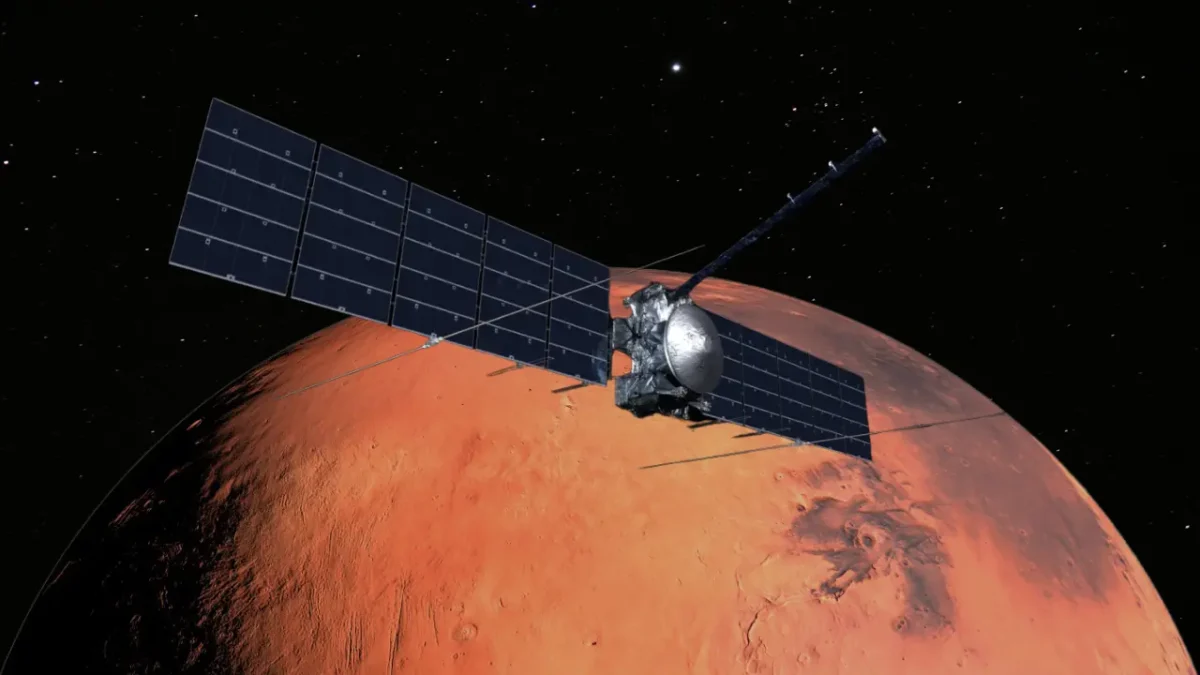NASA’s interplanetary mission Europa Clipper has recently crossed an important milestone. On March 1, while passing near Mars, this spacecraft successfully tested its powerful radar instrument REASON (Radar for Europa Assessment and Sounding: Ocean to Near-surface) in space for the first time. This was a test that was not possible to do on Earth. Now engineers have analyzed the entire data set and confirmed that the instrument performed exactly as expected.
This radar is designed to peer under the icy cover of Europa to find signs of hidden reservoirs and possible ocean there. But it also had to work properly in interplanetary conditions. The flight to Mars proved to be an appropriate opportunity for this test. As Europa Clipper passed at an altitude of about 550 miles from the surface of Mars, REASON sent radio signals towards the surface and successfully received them back. The process took about 40 minutes of data gathering and recorded more than 60 gigabytes of radar data in total. Engineers observed that the radar system worked exactly as expected in lab tests and simulations.
Testing of this radar on Earth was limited as it required a very large test chamber, about 250 feet long, to receive its waves correctly. Since such a facility was not available, this Mars flyby became an ideal test of it in real conditions. For many scientists and engineers, this was the first time they were able to see how the equipment works in space. It also gave them the necessary experience before reaching Europa’s orbit.
About Europa Clipper
The spacecraft was launched on October 14, 2024 and is currently about 280 million miles from Earth. Its total journey will be 1.8 billion miles long, with another gravity assist from Earth in 2026. After this it will reach Jupiter’s system. There, it will make dozens of close passes of Europa, coming within just 16 miles of the moon’s surface. During the mission, the radar will scan across the ice sheet while other instruments will study surface composition, geological activity and possible material exchange between the surface and the ocean.
The mission is one of NASA’s most ambitious projects ever, aimed at studying planets beyond Earth that may hold potential for life. This successful radar testing near Mars shows that Europa Clipper is fully operational and ready to provide scientists with crucial information that will help uncover the mysteries hidden beneath Europa’s icy surface.
